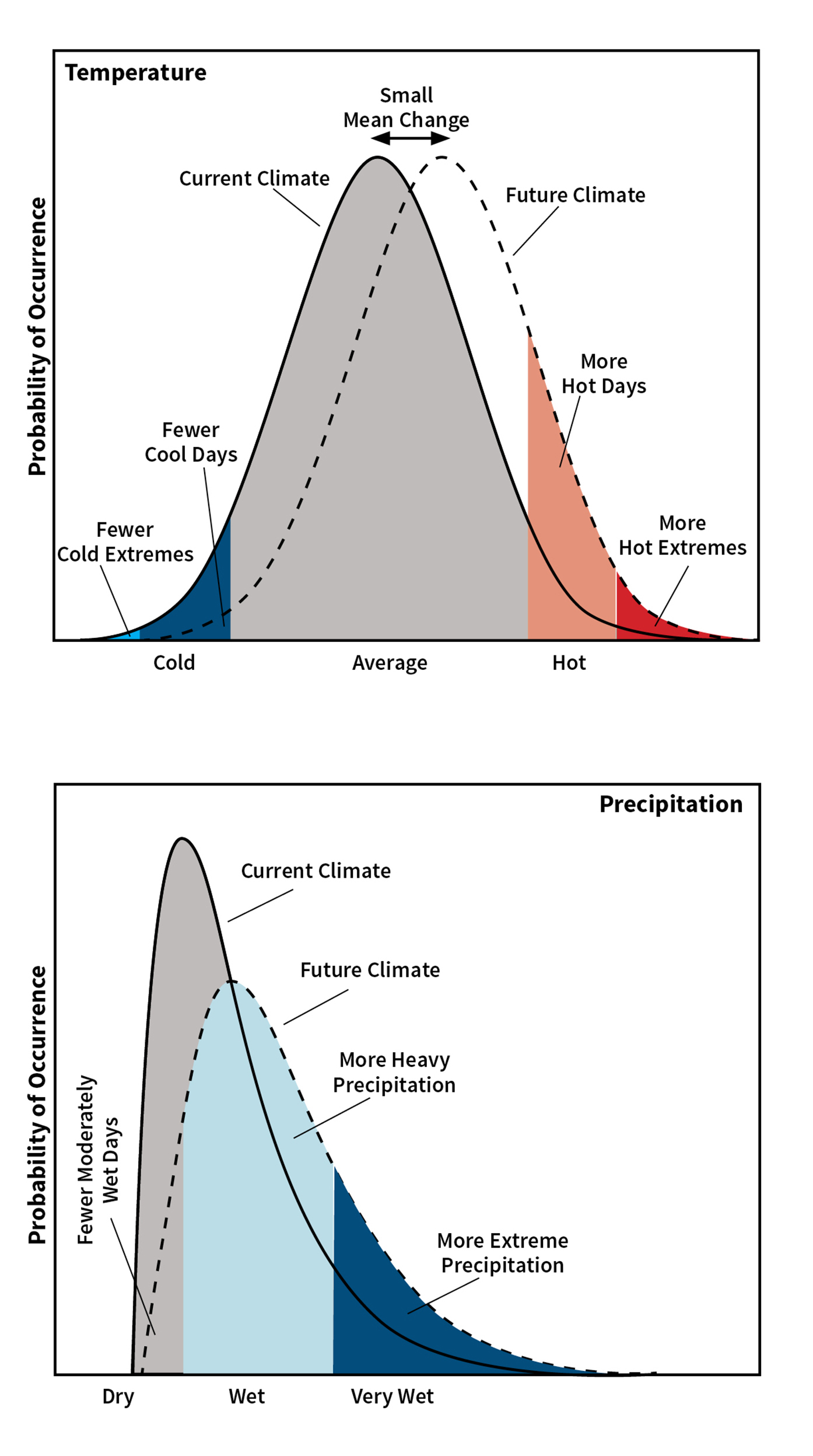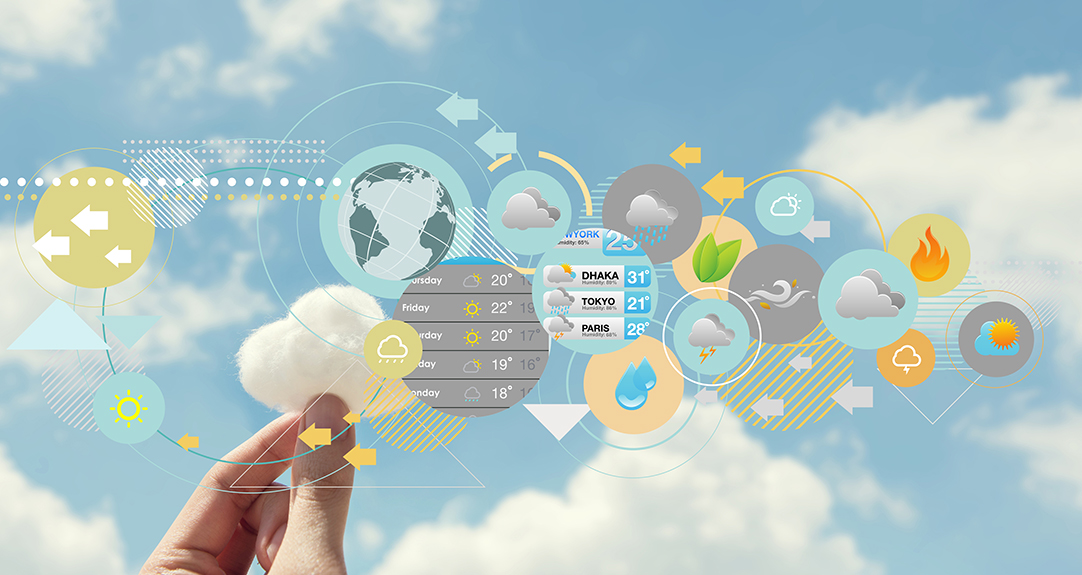Breaking Out of Your Bubble
Challenges when collaborating across neighboring professions
August 2021As a fundamental or basic scientist, I am interested in an improved understanding and prediction of natural hazards and extreme weather phenomena like hurricanes. I am also passionate about finding ways to ensure science is used to safeguard life and property against these hazards, especially as climate change makes these events more impactful. Over the years, I have learned this is no easy feat. Giving a science talk at a conference or publishing scientific results in a peer-reviewed paper does not mean that it is useful to decision-makers and actuaries.
So, the question arises: Why are scientific papers—packed full of analysis and results—of little to no use to my actuarial and industry colleagues?
Speaking the Same Language
One of the main, and often the first, challenge that people from different professions encounter is language. As we grow up in our respective disciplines—just like when we were children learning the language and accent from our region of birth—we learn the language and jargon of our professional field to the point that it becomes as familiar to us as our mother tongue. Communicating across these different languages is as tricky as communicating, for instance, across English and French.
When speaking the language of our discipline, two problems arise. The first is that we simply do not understand each other—a difficult problem, but one that is relatively easy to recognize and correct. The second—and one that is much more dangerous—is that we think we understand because we use the same words, but in reality, we do not understand because the same terms in various disciplines can mean something vastly different.
For example, the word “model” is commonly used across different disciplines to describe different concepts. For me, the word “model” means a computer-generated simulation of all of the weather happening outside of my window and across the planet, which includes wind, rain, temperature, pressure and how these elements will change over time. My industry partners might use the word “model” when relating historical hurricane numbers to the one in 100-year probability of an event occurring. It’s no surprise then that one of the first questions a new industry partner might ask is: “How do you get rainfall associated with hurricanes from your model?”
Asking the Right Questions
Another challenge when working across disciplines is landing on the right questions that actuaries and the industry can use to make informed decisions. For example, I am often asked if climate change impacts the frequency of hurricanes. We have become used to communicating the frequency of past and potential future extreme events, and it is not uncommon to see headlines like “NOAA predicts more than average number of hurricanes for 2021.” So, a question about future hurricane numbers is fair, although as a scientist, I know that hurricane-related damages are only partially driven by frequency. Predictions for the end of the century suggest we will see fewer hurricanes compared to the current climate. Taken in isolation, this could be interpreted that hurricane damage will reduce under climate change conditions. But damages associated with hurricanes are driven by wind and rain intensity. Thus, focusing on the impact that climate change will have on these characteristics will ultimately lead to more useful information for decision-makers.
In the December 2015 Paris Agreement,1 signatory nations in the international community agreed on: “Holding the increase in the global average temperature to well below 2°C above preindustrial levels and to pursue efforts to limit the temperature increase to 1.5°C above preindustrial levels.” A challenge scientists face is explaining the risks and uncertainties surrounding these climate-related changes over the coming years and decades in terms of these small, yet important, average temperature changes.
For example, a relatively small mean change in the average temperature will result in significantly more hot and extremely hot days (see Figure 1). This, coupled with fewer cool days and nights, could dramatically impact mortality—especially in vulnerable communities. At the same time, this small temperature change will affect rainfall patterns across the world, resulting in more and prolonged droughts and more extreme rain that can lead to flooding.
Figure 1: Effect of Small Mean Temperature Change on Extreme Temperature and Precipitation

Practical Considerations
On the practical side, deliverables, time to outcome, research time horizon and data are all challenges that need to be overcome when working across different disciplines. Using hurricanes again as an example, scientists look at how climate change might impact global and basin-wide hurricane numbers and characteristics like intensity, size, speed of movement and rainfall potential. Since the impact of climate change is easier to study when the climate change signal is large—that is when the global mean temperature increase surpasses 2°C above preindustrial levels—scientists often focus on hurricane projections toward the end of the 21st century.
Researching these types of impacts involves vast amounts of data, which is both time-consuming and requires supercomputers. It is therefore not uncommon for a scientist to study these impacts for years before publishing results—an approach that has led to reliable, defensible and sound scientific results. To make this research more applicable to decision-makers, several barriers need to be overcome. Decision-makers cannot use basin-wide hurricane information; they need this information on smaller subsections of the coastline. They also need projections for the next couple of years and not for the end of the century, and since decisions are made over months, they cannot wait years for the research to become available.
The slower and careful approach of scientists is essential in the academic world. However, this means scientists are often hesitant to publish or release results that contain large uncertainties, forgetting that our actuarial and industry colleagues are well-versed in dealing with uncertainties. I am also often reminded that traditionally actuaries had to rely only on historical event sets. So, even if today’s scientific results come with the caveat of uncertainties, the fact that they are forward-looking provides more information than what was previously available.
Data remains a considerable challenge when working across disciplines. Weather and climate data are typically large multidimensional data files that contain all environmental fields necessary to describe weather and climate conditions and how these conditions change over time. These files are stored in formats that are common to scientists and are independent of computer platforms.
While this data is essential for atmospheric researchers, it represents large barriers for researchers from other disciplines. To store all of that information requires petabytes of space (to put that in context, one petabyte can hold 11,000 two-hour movies). Storing or moving around that amount of information is no easy task. Aside from being computer independent, the special formats used for weather and climate data also ensure that the data is stored in the smallest possible files—meaning that special programming interfaces that are less common in other disciplines are needed to analyze the data.
The fields describing atmospheric conditions—like temperature and moisture—are also not generally directly useful for actuarial purposes. For example, to use this data to evaluate how climate change will impact hurricanes requires algorithms that can identify, track and extract hurricanes before one can evaluate how their characteristics might change over time. Likewise, understanding how climate change might affect mortality requires information about the exceedance of a threshold temperature and not just years of temperature records.
Working Effectively Across Disciplines
As a scientist who focuses on societally relevant research topics, I have often thought about the information my scientific colleagues and I need to make working with actuaries more effective. Likewise, I ponder what weather and climate information I would like actuaries to know—things like glossaries to explain discipline-specific jargon, a weather and climate 101 course, an actuary for dummies book, and the list goes on.
I finally have come to the realization that none of these will ever take the place of humans working together. And as we navigate a new world under climate change conditions—a world that is sure to impact all of our disciplines—the only way to approach the questions and challenges of the future is to have all disciplines at the table to codesign these interdisciplinary research questions.
Statements of fact and opinions expressed herein are those of the individual authors and are not necessarily those of the Society of Actuaries or the respective authors’ employers.
References:
Copyright © 2021 by the Society of Actuaries, Chicago, Illinois.

